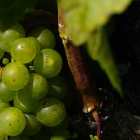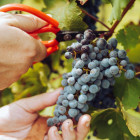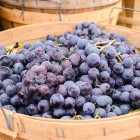Order a bottle of wine at any decent restaurant and your server will likely pour a small measure for your approval. This isn’t about finding a wine to your taste, of course, but rather to check that it’s not fallen foul of one of wine’s most common enemies – cork taint. Nowadays, this particular ceremony is more for show than anything else, given that so many wines comes with a screw cap instead. But the very existence of the ritual just goes to show how susceptible wine can be to faults. Here are the ones you need to know about, and how to identify them.
1. Cork Taint
Warning signs:
Cork tainted wines have a dank smell reminiscent of wet newspaper, mouldy cardboard or wet dog, and any fruit flavours will be muted.
What causes it:
TCA (which stands for 2,4,6-trichloroanisole) is the chemical culprit behind corked wine – it finds its way into the bottle somewhere during production, usually via the cork, although it can be present in oak barrels or processing lines, which results in whole batches of wine being ruined.
The bottom line:
Cork taint isn’t physically harmful, it just makes for an unpleasant drinking experience. Once upon a time polyvinylidene chloride (PVDC) could be added to the wine to remove the TCA taint, but the formula has since changed and is no longer as effective. Your best bet is to return the bottle.
2. Oxidisation
Warning signs:
White wines become ruddy and brownish and smell of sherry or cider, while reds turn brownish-orange and become flat and lifeless. White wines are much more susceptible to oxidisation than reds.
What causes it:
In a nutshell: too much exposure to oxygen. This can occur during winemaking, storage or shortly after opening the bottle – if you’re buying wine by the glass, ask your server when the bottle was opened. If the bottle is freshly-opened, the issue probably originated with the producer.
The bottom line:
Again, drinking oxidised wine isn’t harmful, but it is unpleasant. There’s nothing to be done once the wine has already turned, so send it back if you’re out, or invest in a wine preservation tool for use at home.
3. Sulphur compounds (aka reduction)
Warning signs:
The smell of a struck match, garlic, cooked cabbage or rotten eggs.
What causes it:
Sulphur-related issues in wine are tricky, largely because wine is supposed to contain a small amount, both as a natural by-product and as an additive to help stabilise the wine. Problems can occur, however, when there’s too much sulphur – this is either the fault of the winemaker, or because the wine has not been sufficiently oxidised (although, as above, you’ll want to avoid too much of that, too!).
The bottom line:
In many cases, decanting will help to mitigate any offending flavours, while some swear by stirring the wine with silver to help reduce the sulphur compounds. If the smells persist after decanting for some time, however, the wine needs to go back.
4. Heat damage
Warning signs:
Reds will exhibit prune or raisin flavours while whites will be brown, nutty and sherry-like – and not in a pleasant way.
What causes it:
Prolonged exposure to heat or a series of temperature spikes can lead to what’s known as ‘cooked’ or ‘Madeirized’ wine. Cooked wine is often accompanied by oxidisation, as heat damage will compromise the seal of the bottle.
The bottom line:
There’s nothing to be done for a wine that’s already been cooked – although you could use it as a braising liquid! Avoid future mishaps at home by making sure your wine is stored at the proper – and, critically, consistent – temperature.
5. UV light damage (aka lightstrike)
Warning signs:
Delicate white wines such as Champagne, Pinot Grigio and Sauvignon Blanc smell like a wet woollen jumper.
What causes it:
This is damage caused by exposure to excessive radiation – usually UV light as a result of placement in the sun or near a window.
The bottom line:
Irreversible. While most wine bottles are coloured green in a bid to avoid lightstrike, many whites nowadays come in clearer bottles for aesthetic purposes – keep them in the dark!
While the five concerns listed above are universally regarded as common wine faults, there are some issues that are more open to debate, and – like so many things involving wine – are a matter of personal taste. These are generally regarded as flaws, rather than faults, and in some cases can be easily rectified.
1. Wine diamonds
Also known as tartrate crystals or ‘glass shards’, these are mineral precipitates that form out of unfiltered, high mineral wines. They’re entirely harmless and have no bearing on a wine’s smell or flavour – simply decant with a filter.
2. Sediment
Sediment – the dark, sandy material at the bottom or side of your red wine bottle – occurs for two reasons. Firstly, many producers choose not to filter their wines in order to preserve flavour and texture. Secondly, over time acid, tannin and colour compounds will naturally bond and fall out. Again, it’s completely harmless – just decant before serving.
3. Volatile acidity
Like sulphur, acetic acid is another tricky component of the winemaking process. In some cases, too much acid can be a real problem, leading to vinegar taint and a downright unpleasant drinking experience. However, it’s also a tool used by some high quality winemakers to develop complexity in their flavour profiles, and if it’s not to your liking that’s simply a matter of taste.
4. Brettanomyces
Often simply called ‘Brett’, this so-called flaw is a major source of a division among the wine industry. Brettanomyces is a type of yeast used in the winemaking process which has a very distinctive barnyard smell: think hay bales and sweaty horses. It’s long-played an important role in flavour profiles associated with prestigious appellations , particularly in France’s Rhone Valley, and some wine aficionados positively adore its presence – Chateauneuf-du-Pape’s Chateau de Beaucastel is a fine example of a wine utilising Brett. For some wines, it adds interest, for others, it’s overpowering and off-putting. As with all things wine, it’s a matter of preference.






